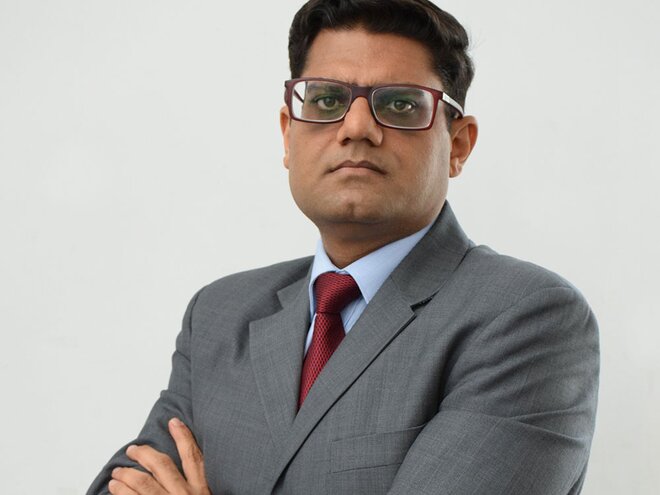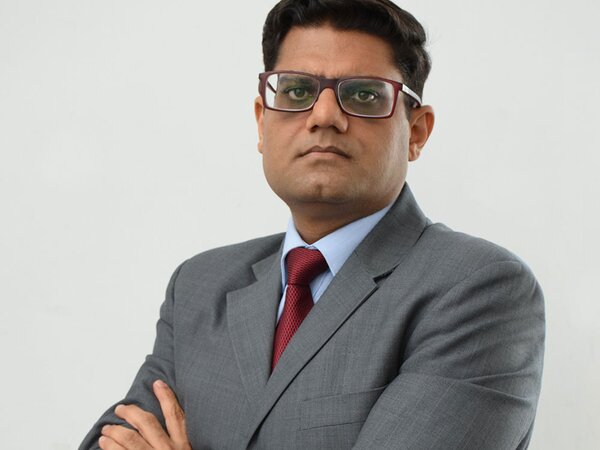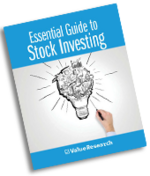
After the crash of March hit investors like a bolt from the blue, the swift recovery in the last two months has again confused them. After all, the number of infections is rising faster now and the vaccine may still be many months away. We speak to Siddharth Bothra of Motilal Oswal Mutual Fund about whether the recent rally is justified in light of the recent quarterly results. His funds have performed well over the last year, so we check with him the reason for that. He also throws light on the new Motilal Oswal Multi Asset Fund.
Both your large-cap and aggressive hybrid funds have handled the crisis rather well. In fact, looking at their one-year returns, one hardly sees any impact of the pandemic. What has worked so well for you?
The credit for the relatively insulated performance of both our funds would go to our QGLP (Quality, Growth, Longevity and Price) investment philosophy. The objective of our philosophy is to create long-term wealth for our investors. For anyone with a mandate to invest and build wealth for the long term, they need to have an effective strategy for dealing with possible drawdowns and downsides due to the many black-swan and other risks that one will invariably encounter during this phase. Hence, at the heart of our philosophy is capital protection by focusing on adequate 'margin of safety'.
As such, while evaluating any bottom-up investment opportunity, our first focus is on ensuring capital protection and then on evaluating the potential risk-adjusted returns. We also have a broader and holistic view on what attributes actually constitute margin of safety. While determining margin of safety, the key attributes we ascribe weightages and importance are: (1) quality of business and management (to ensure that the company survives over the long term), (2) longevity of growth (unless we have longevity of growth, value creation cannot happen) and (3) a reasonable price (buying at price lower than the intrinsic value and not some low quantitative number alone). What also helped our funds withstand the current crisis better is that almost 65 per cent of our portfolio by weight comprises companies engaged in essential goods and services businesses, which have been relatively insulated even in this environment.
The first quarter results of many companies are out, providing a glimpse of the level of business impact of the crisis. Are the results broadly in line with what you had expected or is India Inc. doing better than your expectation? Do they justify the sharp market rally in the last two-three months?
The first quarter of FY21 was truly an exceptional period worldwide. Hence, one needs to be careful of how much importance one ascribes to this result season or how one extrapolates it. Having said that, we already have about 90 per cent of Nifty weight companies report earnings and there are some trends which are clearly visible. While there has been some disappointment on the net sales front, overall operating profit and net profit have beaten estimates and been a positive surprise. The strong cost control has therefore been the defining theme of this result season. We have also witnessed more upgrades then downgrades as possibly analysts came up with their worst-case estimates for this quarter.
The current market up-move has to be seen in the context of its fall from March. What we witnessed in March was a sharp event-led correction. The characteristics of such corrections is that they are sharp and fast, but post that the markets start to recover as the event risk abates. So, we typically have three stages here: first is complete disbelief in upturn, second is high scepticism for the recovery and lastly complete euphoria. We seem to be now in the third stage as market optimism in a way suggests that the event risk is behind. Herein, perhaps lies the key risk as the event risk is still playing out in India and worldwide. While we may now have more visibility on solutions, they are still at the hope stage. Hence, my sense is that currently the market may be running ahead of fundamentals.
Which sectors or market segments are you consciously avoiding because of the unfolding impact of the pandemic and which ones are you particularly bullish upon? What's your view on the economic recovery? By when do you expect things to be back on track?
We generally avoid sectors or companies which have a high solvency risk. Hence, in the current period, we are wary of companies or sectors which have high leverage, high operating fixed costs or poor balance sheets. We remain relatively more bullish on (1) plays which do not need or are relatively much less dependent on macro tailwinds for their performance, (2) companies engaged in essential goods or services businesses and (3) good long-term economy recovery plays without high operational or solvency risks.
It is difficult to forecast economy or market moves even in normal times. Given the unprecedented environment we are in, I would assume the probability of predicting such outcomes are even lower now. Our style of investing is different and is highly bottom-up. In that regard, we feel even in this crisis environment, we continue to find some very interesting exceptions and insulated plays for long-term wealth creation.
You like to build high-conviction portfolios of under 25 large cap stocks. How do you narrow down to the ones you'd like to hold in a limited, welltracked universe of large caps?
Due to our investment philosophy and obsession with focusing on quality of business and management as the true 'margin of safety' attribute, the effective investment universe we focus on is much smaller. Our investment approach is not to 'mine and shift through sand to find specks of gold' but rather to 'find nuggets of gold, hiding in plain sight'. Consequently, we remain focused on identifying plays which have attributes to compound and generate longterm wealth. Fortunately, such plays are very limited, which makes the search task relatively easier.
How much of a role do benchmark allocations at stock or sector level play in your portfolio?
We are an active and bottom-up investing house. Most of our funds are 50-80 per cent away from their respective benchmarks. As such, our investing style is benchmarkand sector-agnostic.
Your growth style of investing, coupled with highconviction bets, translate into a fairly pricey portfolio. For instance, the P/E ratio of your large-cap fund has barely dropped below 30 in the last three years making it one of the more premium priced ones in its category. How comfortable are you with this, more so given that we are likely to be in a low-growth environment?
The P/E of a company is a function of growth, longevity of growth, ROE, reinvestment and cost of capital. Hence, one needs to look at a company's P/E with respect to its attributes in order to determine if it is high or low. One should not form a view on the basis of some absolute number alone. We look to buy companies with a sufficient margin of safety and at a reasonable price. In this regard, given the attributes of our portfolio holdings, we remain comfortable with our portfolio valuations.
There are stocks in your portfolio which you've held since long but there are quite a few others in which your holding period has been of barely a few months. What are your triggers for entry and exit in such instances?
As a house we believe in the 'Buy Right, Sit Tight' philosophy. Hence, we try and minimise our company churn and overall portfolio turnover. Our portfolio turnover is significantly lower than the industry average. Nevertheless, we still have some churn in the portfolio. What determines the exit of a stock for us are as follows: (1) change in the long-term investment thesis or assumptions from the initial ones at the time of purchase, (2) issues around management quality/capital-allocation decisions, (3) better switch opportunities within our watchlist and (4) booking profits if the thesis has played out.
You follow the same high-conviction strategy for your aggressive hybrid fund as well. How does it fit in there, given that it is meant for a more conservative equity investor? Also tell us about the guidelines the fund follows for managing the debt portion in terms of issuer-level exposures, credit quality and duration?
We do not see running a high-conviction portfolio as a risk. We believe excessive diversification leads to a loss of focus and actually increases risks. We manage our portfolio in what we believe is the conservative way, with an eye on capital protection and then on achieving balanced risk-adjusted returns. Hence, we see no contradiction in having the same approach for our large-cap focused fund and our hybrid aggressive fund.
We have a conservative approach in debt and prefer to stay at the shorter end of the curve up to five years residual maturity for sovereign papers and up to 2.5 years maturity profile for corporate debt (PSU and private). SEBI limits for issuer-level exposure for mutual funds is 10 per cent for corporate debts (CD/CP/NCD) but we have further limited ourselves to 5 per cent issuer- level exposure in the same. Sovereign debt (G-sec/ SDL/T-bills) doesn't have any limits by SEBI. We will not invest anything below AAA and AA+ (long term) and A1+ (short term).
Tell us about your new Motilal Oswal Multi Asset Fund. How is it going to be managed? What kind of asset allocation do we expect across domestic equity, international equity, debt and gold in a steady state?
Motilal Oswal Multi Asset Fund has been launched with an aim to help conservative investors survive the tough conditions of equity markets and lacklustre interest rates in fixed-income markets. It promises to do this with the help of a diversified basket of four asset classes.
- Indian equities: Through a portfolio of large-cap stocks selected based on the proven Q-G-L-P philosophy.
- Debt and money-market instruments: Through a high-quality AAA portfolio with a three- to five-year average maturity, heavy on G-secs and SDLs (state development loans).
- International equities: Through an allocation to the units of Motilal Oswal S&P 500 Index Fund
- Gold: Through units of a gold ETF
In Motilal Oswal Multi Asset Fund, equity, equity-related instruments and international equity index funds/ equity ETFs will have a 10-50 per cent allocation; debt/ money-market instruments will have 40-80 per cent allocation; and gold ETFs will have 10-20 per cent allocation. The fund will follow a rule-based rebalancing model to allocate assets between domestic equity and debt/money-market instruments through a proprietary Motilal Oswal Valuation Index.
Who is it more suitable for versus your other hybrid fund?
We feel our Motilal Oswal Multi Asset Fund is more aimed at investors looking for asset diversification and more stable returns.



